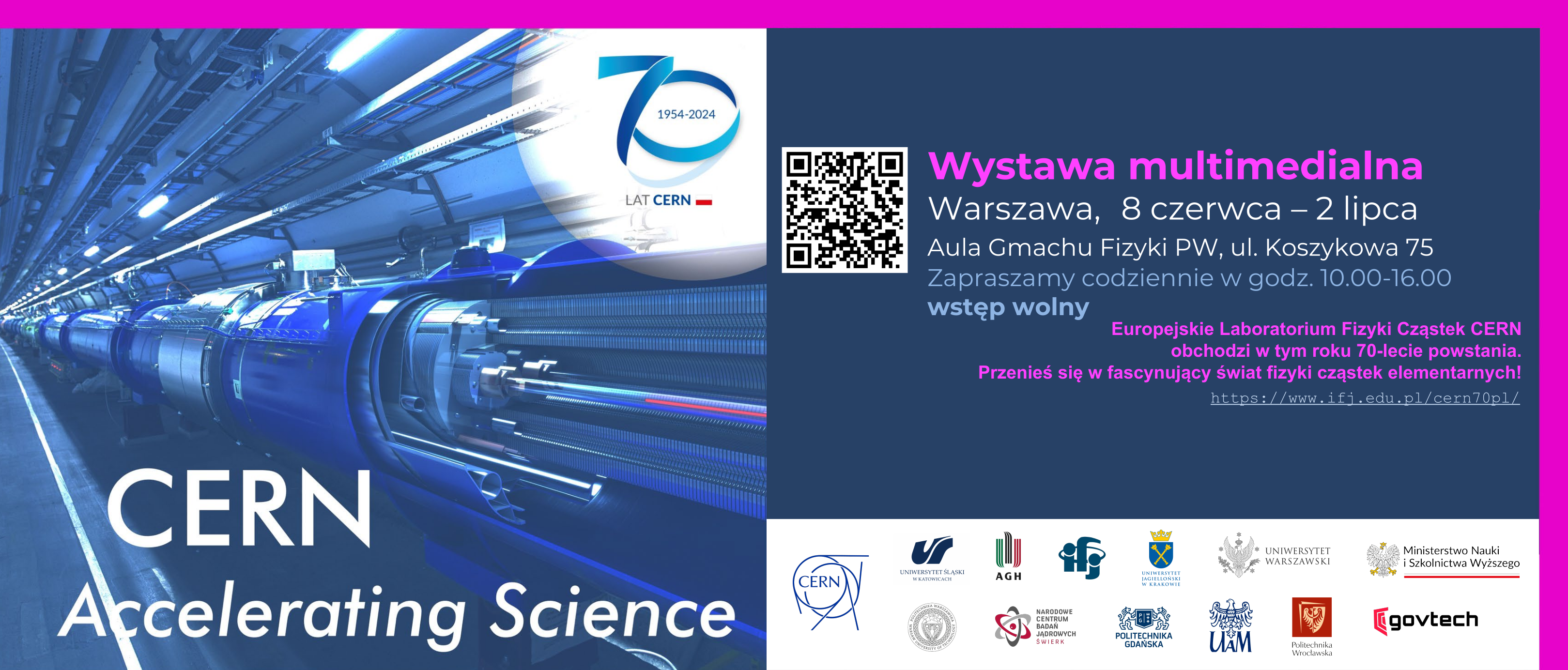
CERN exhibition 'Accelerating Science' coming soon to Warsaw University of Technology
03-06-2024
The European Centre for Nuclear Research CERN is celebrating its 70th anniversary this year. As part of its celebrations, the Faculty of Physics of the Warsaw University of Technology, the University of Warsaw, the IFJ of the Polish Academy of Sciences and the NCBJ are jointly organising a multimedia exhibition entitled 'Accelerating Science'. It will be open to the public at the Faculty of Physics, WUT from June 8.
The exhibition will allow visitors to understand the research being carried out by scientists working at CERN and the equipment they use. It will take those interested into the extraordinary world of matter, antimatter and elementary particles, that researchers are trying to understand in order to decipher the laws that govern our universe. All this with the help of some of the largest man-made experiments, led by the Large Hadron Collider. The exhibition includes films, animations and other interactive elements that will provide an attractive introduction to the activities of CERN and the participation of Polish scientists in the research conducted there.
The exhibition will be on display between June 8 and July 2 (on weekdays and weekends 8-9 and 15-16 June) in the auditorium of the Faculty of Physics of the Warsaw University of Technology, 75 Koszykowa St. Admission is free. Organised groups (up to 35 people) are asked to register via the form available at: https://forms.office.com/e/GNRiYW2DhP. Registered groups (including English-speaking groups) will be able to count on the expert assistance of guides.
The National Centre for Nuclear Research has been associated with CERN for many years. Researchers from the Institute are involved in major experiments at the Large Hadron Collider, studying the properties of the Higgs boson in the CMS detector, analysing symmetry breaking in quark decays at the LHCb, or learning about quark-gluon plasma in the ALICE experiment. They are also active in other experiments, such as COMPASS and NA61/SHINE at the SPS synchrotron, and in the FASER experiment, where evidence for the existence of dark matter particles is sought ( Sebastian Trojanowski, PhD, from the NCBJ's Department of Theoretical Physics, is a co-author of the FASER project). However, the Institute is associated with CERN not only in terms of research. In the Department of Nuclear Equipment HITEC, Pi-Mode Accelerating Structures (PiMS) and the buncher (a device for grouping particles into so-called bunches) were developed as part of the LINAC4 linear accelerator. It is there that particles are initially accelerated, which are then sent to other elements of the accelerator complex and ultimately to the Large Hadron Collider. The electron accelerator in the G-bar experiment and some of the multidetector components that make up the LHCb and CMS experiments were also built at Świerk. NCBJ also supports CERN in terms of computing. The Świerk Computing Centre has Tier 1 status for the LHCb experiment in the Worldwide Computing Grid. It is the first computing centre in Poland and one of 14 in the world to be granted Tier 1 status (CERN is Tier 0). The CIŚ dedicates its resources to processing and storing some of the raw data from large experiments, as well as transferring it to smaller, local computing centres (Tier 2).
We look forward to seeing you!




